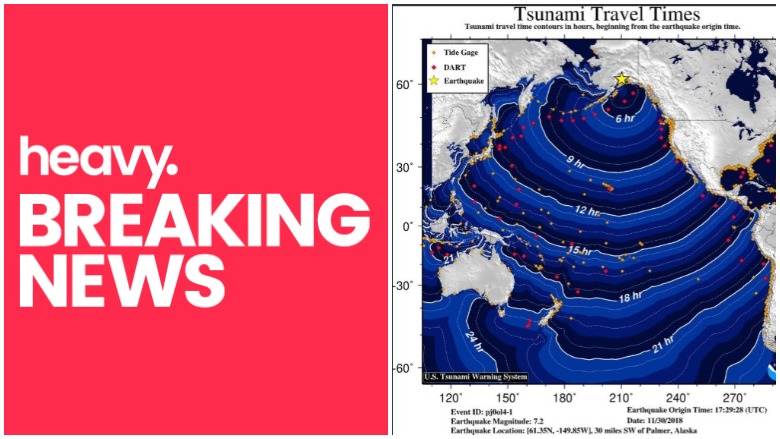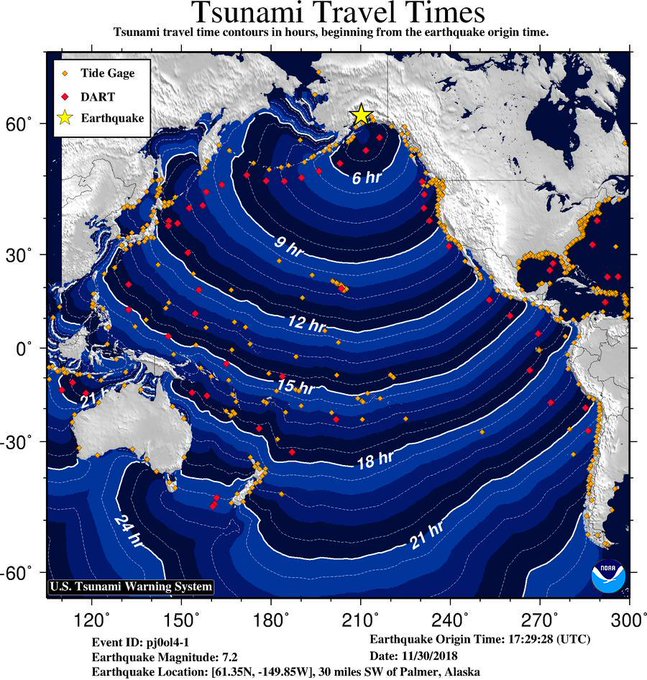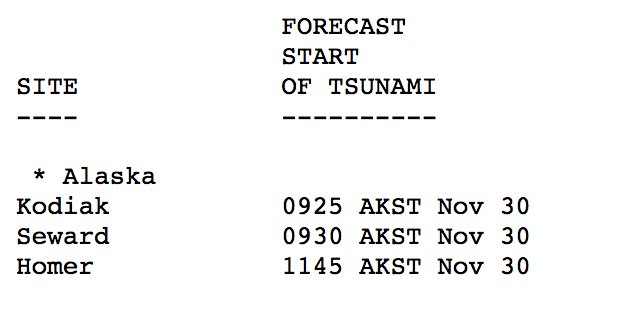
NWS NWS tsunami map for Alaska earthquake
The National Weather Service has canceled its tsunami warning.
According to the Tsunami.gov website, here’s the latest on the possibility of a tsunami in Alaska and the entire Pacific coastline.
Initially, it was reported by the National Weather Service that a tsunami was unlikely in British Columbia, Washington, and Oregon coastlines, but the latest advisory says for “other US and Canadian Pacific coasts in North America, the level of tsunami danger is being evaluated.
The NWS says “Tsunami activity is forecasted to start at the following locations at the specified times:”
Kodiak 0925 AKST Nov 30
Seward 0930 AKST Nov 30
Homer 1145 AKST Nov 30
Residents of Kodiak Island have been told to move to higher ground.
Here’s what you need to know about tsunamis and how to survive them.
Stay away from beaches and coastlines. Tsunamis can travel hundreds of miles per hour, so you can’t escape if you’re close enough to see one. If you’re on the beach and the tide suddenly goes out, head inland immediately. A tsunami is coming and you may only have minutes to escape.
If instructed to evacuate, leave immediately with your family and pets.
Even a short delay to pack possessions could put you in danger.
Move to higher ground.
Find a place that’s at least 100 ft (30 m) above sea level or 2 mi (3 km) inland.
Help children, seniors, and people with disabilities reach safety.
They may not be able to do so on their own.
A tsunami warning is issued when a potential tsunami with significant widespread inundation is imminent or expected. Warnings alert the public that widespread, dangerous coastal flooding accompanied by powerful currents is possible and may continue for several hours after the arrival of the initial wave. Warnings also alert emergency management officials to take action for the entire tsunami hazard zone. Appropriate actions to be taken by local officials may include the evacuation of low-lying coastal areas and the repositioning of ships to deep waters when there is time to safely do so. Warnings may be updated, adjusted geographically, downgraded, or canceled. To provide the earliest possible alert, initial warnings are normally based only on seismic information.

